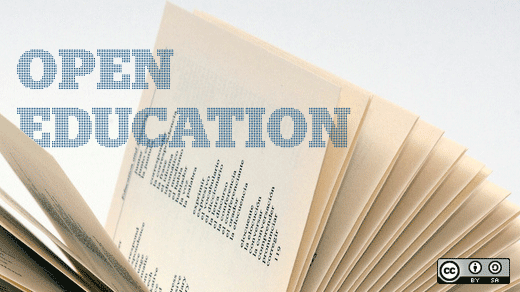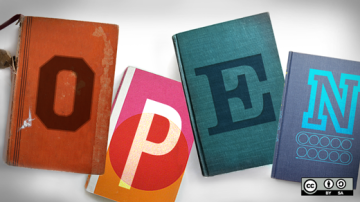I teach a traditional "get to know college" course for freshmen. It's designed to help new students work on the skills they'll need to be successful in college, such as time management, personal management, and communication.
It's also become a prime opportunity for me to introduce freshman students to the guiding principles of open culture.
I've developed a method for treating my class as an open organization. To create a more collaborative and inclusive environment, I let the students co-construct the official course syllabus.
Here's how I do it—and what students have taught me about the value of making our classrooms more open.
The open syllabus
I taught two sections of the course in fall 2017 with a total of 27 students. We met twice each week, for 50 minutes each time. My goal was to afford the students as much control over the course as possible within the constraints set by the course description and requirements. In the spirit of open and transparent problem-solving, I facilitating a few activities that involved:
- identifying an aspect of the course yet to be specified (for example, a"disruption policy"),
- discussing (as a group) the constraints of the problem, and
- helping students generate a solution.
Early in the semester, we used these techniques to construct some course policies. Later on in the term, we employed the same methods to construct some homework assignments too.
Building the policies
First I challenged the students to collaboratively compose a "disruption policy" for the course. I offered the following instructions:
The Code of Conduct currently has no policy for attention and handling classroom distractions, such as cell phones. We will create one during this activity. This policy will apply to all of Heidi Ellis' sections of LA-100. We are attempting to solve the following problem: "Computer noises, cell phones, messenger apps, IM, whispering, music, talking, etc., can all potentially draw learner attention away from learning. How do we ensure that class can proceed without interruptions or distractions? How do we ensure that class meetings are a time and place where we can focus on learning? How do we ensure that everyone in the class has an equal opportunity to learn?"
This exercise was a learning experience for both my students and me, as we clearly had different visions of what constituted a "disruption." While we all agreed that students should pay attention to the instructor and engage in all classroom activities, students thought they should be able to take "important" calls during class time and that texting during class was acceptable. I thought that cell phones should be turned off entirely during class. Students also thought that leaving the classroom to get a drink without asking permission was acceptable, while I thought that they should handle thirst needs before or after class.
This resulted in a discussion about professionalism and the expectations associated with college-level work. We discussed what constituted a distraction and agreed that making sounds, whispering, and talking in class all counted as distractions. This in turn led to a discussion of the impacts distractions can have on a learning environment and the importance of paying attention in class. We also explored the impact various learning technologies can have on a classroom—for example, the tools students with disabilities require to fully participate in class, such as a screen reader—and agreed that noise generated by these was acceptable under the policy we intended to construct.
In much the same way, I also involved the students in co-constructing the course's policy regarding work submitted late. This was the challenge:
The Code of Conduct currently has no "late policy" that determines when assignments are considered "late." The problem we are trying to solve is this: "This policy applies to all out-of-class work. How do we ensure that everyone in the class has the same opportunity to complete assignments? What is a 'timely' submission of a deliverable? End of class? Beginning of class? End of day? What should be done when a submission is not timely? How do we handle legitimate lateness due to extreme illness or death in the family? What is a legitimate lateness? We need a policy that ensures fairness to all class members, including the instructor."
As with the disruption policy, the students and I had very different views of what constituted "late" work, which led to fruitful discussions. Students thought that submitting homework a day or two after the deadline should not be considered late, while I thought that anything submitted after a deadline should be considered late. We then discussed what happens in a professional environment when work is submitted late and when someone arrives late to a meeting. In this case, students still wanted some leniency when handing in assignments, so we agreed that all deliverables would have a one-day "grace period" after which students' scores on those assignments would decrease by one letter grade per day late. Collaboratively, the class produced the following statement:
A deliverable is late when it is submitted after the due date and time. Legitimate lateness reasons include approved illness, family emergencies and death, and athletic events. All deliverables have one grace day after the due date. Submissions that come in after the grace day will be docked one grade per day. Deliverables that will be discussed in class have no late days allowed.
I hosted both the disruption and late policies on GitHub, and in order to make changes students were required to fork the Code of Conduct, make changes, and submit a pull request for group review. A small number of students jumped right in, forking the document and making changes; however, this number was small (perhaps two or three students at most). The majority of students either did not try to make any changes—or tried at the very last minute.
In retrospect, I think the joint construction of portions of the course policy was a real learning opportunity. In the future, I would provide students with a clear understanding of professional behavior before attempting the policy construction and preface this with activities to convey an understanding of professional behavior. I would then use the construction of policy as a real-world example of professional behavior.
Building the assignments
Later in the semester, I again tried an open approach to creating assignments, which I found to be more successful.
The most successful of these was the assignment to fulfill the Oral Communication requirement for the class. The requirement includes creating a presentation and being able to deliver that presentation clearly.
We began with a brainstorming session, during which we identified possible ways of fulfilling the objective. Students came up with the traditional presentation, but also came up with a number of interesting ideas, including:
- Lecture: 2‒3 people create and deliver a presentation followed by quiz. Quiz results displayed on the board interactively.
- Individual, related presentations: Multiple speakers with connected topics where one talk leads into the next.
- Jeopardy game: 3‒4 people, one person per category. Clues would be facts about the open source topic. The person responsible for the topic would introduce the topic, expand on each clue, and conclude the topic at the end.
- Classroom debate: Six debates on six topics, with 2‒3 people per team. Audience takes notes, asks questions, and assesses performance.
- Movie: 3‒4 people, 1 or 2 topics per movie. Choose a story that explains the point. Could use still images with narration.
In addition to the ideas listed above, students also suggested Socratic Seminar and Fishbowl. However I eliminated these ideas as I could find no way to assess these approaches based on the necessary rubrics.
We then discussed which was the most popular idea and jointly decided that a mock Jeopardy game was an ideal way to fulfill the requirement. Students selected a topic related to open source and created questions and answers for the game. Students were then organized into teams of five.We used a modified answer/question approach: Rather than asking questions across categories, each student provided an introduction to their topic and presented five "answers," and the rest of the class were encouraged to provide the "questions." Once all "questions" had been asked, the student provided a summary of the topic.
Students were engaged throughout the process of constructing the assignment and were enthusiastic about the game itself.
Open organizations and university classrooms
Overall, the "open syllabus" exercise taught me a lot about both open organizations and about student preparation for learning in one.
In the future, to better support an open classroom, I would make the following changes:
- Beginning the class by providing students with information about how open organizations work and examples of open organizations
- Creating one or two in-class activities (early in the term) that allow students to experience open principles and how they work in an organization
- Creating activities to instill a foundation of professionalism (in order to employ open organization principles, students need to have an understanding of the boundaries of professional behavior)
- Progressing to using an open organization approach to developing assignments by starting small (perhaps by having students develop a small assignment first, rather than attempting to create self-governance as their first effort)
Keeping student work open and accessible has value for subsequent groups as well. I could foresee, for example, teaching successive sections of the same course in which current students reviewed the actions and decisions of previous classes to better understand open organization principles.
I do see a good deal of potential for running classrooms using principles derived from open organizations. The Jeopardy assignment was the most popular and most successful at engaging student interest. Clearly, provoking interest is an important factor to employing open principles in the classroom.
I found that students were more creative when I gave them more space to create. They came up with very interesting ideas in response to fulfilling a broadly defined assignment. This type of creativity is key for supporting learning.
Moreover, students clearly felt empowered to exert some agency over their learning. They felt more like they were part of the education process rather than just a consumer of knowledge. I expect that further use of an open approach would allow students to be more invested in their learning, thereby producing students who are better prepared for real-world complexity.







5 Comments